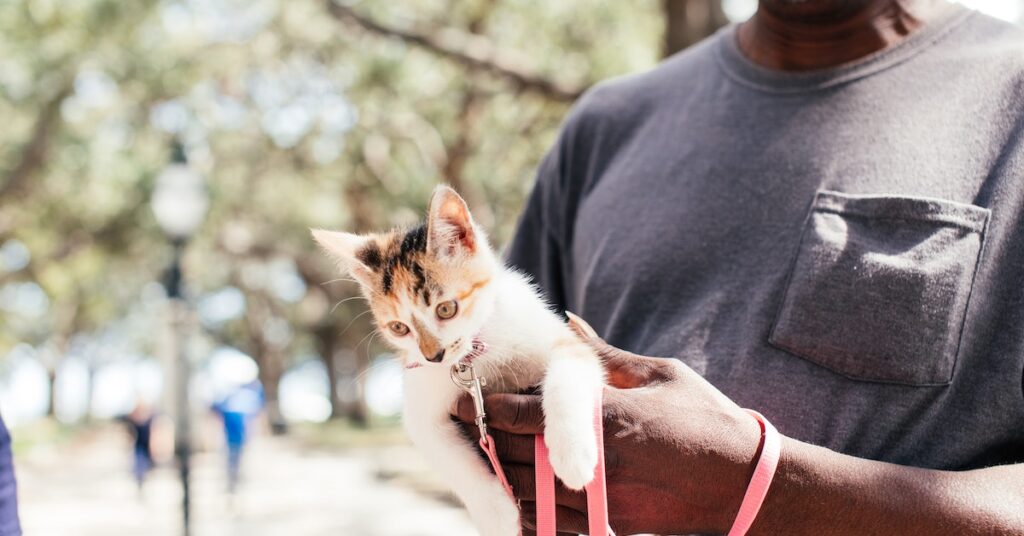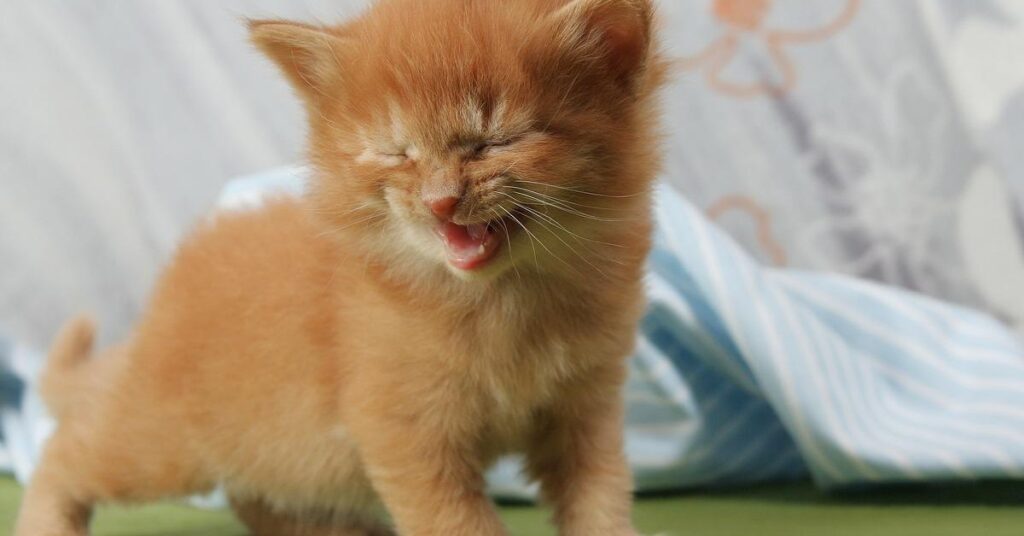The first step to using a cat harness is getting the cat used to the harness. Try letting the cat wear it in the vicinity of your food for a few days. You can also reward your cat for wearing the harness by offering food, treats, or play. If the cat wears the harness consistently, it will soon get used to it. After a few days, the harness can be removed and the cat can be free to explore the surroundings.
Read more about 15 Best Cat Carrier, You Must Have One
Getting a cat used to a harness
Getting a cat used to a new harness or leash can be challenging. To help your cat get used to the new device, introduce it gradually. Use treats or loud clips as a distraction during this time. It also helps if you put it on slowly and let your cat sniff it first. Then, try placing it on your cat for a few minutes and taking it off when it starts to get uncomfortable.
As with any new situation, it will take a few weeks to train your cat to accept a new harness. During this time, reward your cat with treats and love. Make sure the harness is loose enough for two fingers to fit between your fingers and the cat’s backside. Try letting your cat drag the leash a little while before you buckle the harness. During this time, the cat should begin to associate it with the harness.
If your cat doesn’t seem to mind the harness, you can try introducing it slowly. Start with a few feet away, and gradually move closer. Keep doing this over days and hours until your cat becomes used to the harness. The longer the training period, the more likely it is that your cat will accept the harness. You should aim to make it as comfortable as possible for your cat before introducing it to other items.
To train your cat to accept a harness, you should first introduce it to your pet by bringing it to the food bowl. Once your cat is comfortable wearing the harness, you can dangle a treat in front of her mouth or use a target stick. When your cat accepts the harness, use treats and click and treat as a reward for doing it correctly. Once your cat has adapted to the harness, you can gradually introduce it to other items, including your backpack or your handbag.
The goal of cat harness training is to make her associate a harness with a positive experience. After the first couple of trials, she’ll soon learn to put the harness on herself. To start with, it’s important to make it a slow process, and the pace must be based on her level of comfort and apprehension. It is important to use treats in the beginning, but gradually increase the rewards over time.
Read more about Travel Essentials For Your Cat
Choosing a harness
If you take your cat outside frequently, consider a cat harness. This will keep the cat secure and comfortable while allowing it to move freely. When shopping for a cat harness, choose the style that fits your cat’s personality and size. You should also consider the fabric of the harness, as some cats react to the sound of Velcro. Also, be sure to choose a material that allows your cat to move freely, without being too loose or restrictive.
Measure your cat’s neck circumference and girth to determine the proper size. Measure the neck and chest circumference of your cat with a flexible measuring tape, much like you would for buying clothes. Measure the neck and chest just behind the front legs. If the fur on your cat is particularly fluffy, press it with a finger to get an accurate measurement. You may also want to check the manufacturer’s size chart for additional tips on selecting a cat harness.
Cats love to explore their surroundings and the great outdoors can be a wonderful place to spend time with your cat. But, allowing your cat to roam freely can be dangerous. Your cat can get injured, contract disease, or even die from wandering. By using a harness, you can take your cat outside safely without having to worry about him getting lost. A cat harness is comfortable for your cat, and it can also help your cat exercise while being safe.
Before buying a cat harness, consider how often you plan to use it. Cats like to get into tight spaces, and harnesses need to fit snugly. Otherwise, your cat will be able to slip out of it. Also, it’s easy to misplace a cat harness, so keep it in the house and in the car. This way, you’ll be prepared for anything. This can help your cat feel comfortable.
There are many different styles and types of cat harness available. Choose one that best suits your cat’s personality, age, and shape. Some cat harnesses are designed to give your cat the freedom of movement, while others are designed to keep it safe. As a rule, the safety of your cat is your number one priority. With the right cat harness, you’ll be sure to enjoy all of the benefits of using a cat harness, including your cat’s safety and comfort.
Read more about 5 Ways to Make Your Cat Happy
Adjusting a harness
There are several ways to adjust a cat harness. Some cats will allow you to adjust them with no fuss, while others may require rewards such as a treat. Either way, you’ll want to make sure the harness fits correctly. To start, measure your cat’s neck with a flat, tape measure. If your cat is smaller or larger than the average cat, try to measure the entire circumference of their neck.
The first step is to find the best place to put the harness on your cat. A figure eight harness, for example, has two loops that go around the cat’s head. The small loop does not have a buckle, but the large loop needs to be unbuckled and wrapped around the cat’s chest. Ideally, the harness straps should meet under the cat’s shoulders and belly. After you’ve done this, you can adjust the harness to fit the cat’s body perfectly.
A vest-style harness is more secure and will prevent your cat from escaping. A vest-style harness is better if you’re bringing your cat outside for long periods of time. Make sure the harness fits snugly but does not cause chafing or scratching on your cat. If your cat flops or tries to climb out, loosen the adjustment. If it chafes, loosen it a little and try again.
The straps are longer than the back strap. The straps will be longer than the loop and will fit your cat’s chest properly. Some harnesses have snaps or velcro closures. Be sure to check the sizing of your cat’s harness before you buy one. As your cat grows, adjust it accordingly. You may also want to consider your cat’s personality. Some cats dislike the Velcro sound, and this may trigger seizures.
You may also want to attach a leash to the harness. Keeping the leash attached to the harness is an excellent way to start bonding with your new cat. This way, your cat will be more comfortable wearing it and will soon forget to wear it. And don’t forget to give him a treat after he sniffs it out. If your cat is resistant to wearing a harness, try attaching a leash to the harness and dragging it behind him or her for a few days.
Read more about 9 Best Blankets for Cats and Dogs, You Must Try Some
Rewarding a cat for wearing a harness
Rewarding your cat for wearing a harness is an excellent way to get it to wear the harness. Food rewards work well for this. Using a cat toy or a favorite treat is another great way to reward your cat for wearing a harness. Make sure you use a reward that they like, too. Try a small treat or food to lure them into the harness, then reward them for letting you take it off.
Start small and slowly build up the time that your cat wears its harness. This will make your cat associate wearing the harness with positive things. You may want to try videotaping a session to see which parts are problematic. You may want to offer more treats to your cat if it does this correctly each time. Also, make sure that it fits well so that it is comfortable. Once your cat wears the harness for a long time, reward him with food and treats.
Once your cat has been wearing a harness for several days, you can move on to the next stage of training: allowing your cat to walk on his own. During this stage, you may want to leave the harness on the floor so that it can be smelt by your cat. You can even use treats to lure your cat to go in the direction of your choice. Ultimately, you should reward your cat for taking the step and walking on his own.
If your cat does not move around when it first wears its harness, it may be too small. Be sure to offer a treat every time it shows an interest in the harness. Continue this process until your cat starts to associate the harness with positive experiences. The more positive experience it has with the harness, the easier it will be to train your cat. While this step may seem challenging for some, it will eventually pay off.
As with any training process, you need to be patient. If you want to train your cat to wear a harness, you need to keep in mind that it takes weeks, if not months, to get your cat to accept it. Once your cat gets used to the harness, you can use treats to reinforce your efforts. You should also make it clear that it’s a treat that’s only allowed inside until the harness is removed.
Read more about 11 Best Eco Friendly Cat Litter for Your Cats








